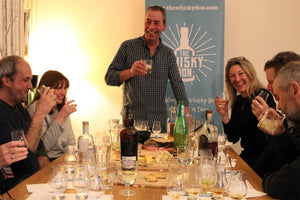Whisky Words: Peat Reek
Peat is decaying plant matter found throughout Scotland and in parts of Europe. It is commonly used as a source of fuel for domestic fires. Should a smoky flavoured malt be required in the Scotch whisky production process at a particular distillery, peat can be burned during the kilning part of the malting process.
Barley is processed (from the field to a liquid called wash) in roughly 12 steps:
- Harvest
- Drying
- Analysis
- Steeping
- Germination
- Kilning
- Storage & analysis
- Delivery to distillery
- Milling
- Mashing
- Fermentation
- Wash
It is important to remember that peat itself is not one of the raw materials permitted by the Scotch Whisky Regulations (see Whisky Myths: Peat is added to whisky). Peat smoke is the permitted additive.
Kilning essentially stops germination by blowing hot air through the bed of "green malt" (the term used to describe barley after it has been germinated). Peat reek (that is, the smoke from burning peat) produces chemicals called phenols which are absorbed by the green malt, imparting a smoky flavour.
Peating levels are measured as phenolic parts per million (ppm), with a lightly peated malt around 1 to 10 ppm, a medium level around 10 to 30 ppm, and 30 to 50 ppm for a heavily peated malt.









